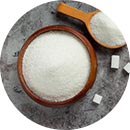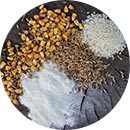According to the Centers for Prevention and Control of Diseases, about 34 million Americans have diabetes, making it a common chronic disease. Diabetes patients are frequently skilled at controlling their sugar levels in the blood and avoiding problems like heart disease and nerve damage. But it’s essential to remember that diabetes can also affect skin health and cause issues that need specialist care.
Describe Diabetes.
When the body cannot adequately utilize glucose (sugar) for energy, diabetes develops. The proper operation of crucial muscles, tissues, and organs depends on glucose. The growth hormone insulin is in charge of controlling blood glucose levels, which enables cells to utilize glucose as an energy source. Diabetes is characterized by either poor or absent manufacturing of insulin or by cell resistance to the impacts of insulin, which raises blood glucose levels.
Varieties of diabetes
Diabetes comes in three primary varieties:-
Type 1 diabetes: Type 1 diabetes, sometimes called juvenile diabetes, develops when the immune system of the body attacks and kills the cells that make insulin. Insulin therapy must be continued forever in those with type 1 diabetes.
Type 2 diabetes: Over 90% of diabetic cases are of the type 2 variety, which is the most prevalent. It happens when the body doesn’t make enough insulin or uses it inefficiently. Diet, exercise, and medication can frequently control diabetes, especially type 2 diabetes.
Gestational diabetes: Gestational diabetes develops during pregnancy when insufficient insulin production meets the growing need. Standard resolution of gestational diabetes occurs after childbirth, although it raises the risk of type 2 diabetes.
Health Effects on the Skin
Diabetes can have a variety of effects on skin health. Skin issues like the following can result from high blood sugar levels:-
1. Dry skin: Dehydration from high glucose levels might result in dry, itchy skin.
2. Bacterial infections: Diabetics increase the risk of contracting skin infections brought on by bacteria like Staph aureus and Streptococcus pyogenes.
3. Fungi: Fungal illnesses like candidiasis and ringworm can be brought on by high glucose levels.
4. Diabetic dermopathy: Diabetic dermopathy is a skin ailment that typically affects the lower legs and develops brown areas of skin.
5. Necrobiosis lipoidica diabeticorum: This skin ailment results in red or brown patches of skin, typically on the lower legs.
6. Diabetic blisters: Although uncommon, diabetic blisters can develop when fluid collects under the skin, commonly on the feet.
7. Digital sclerosis: This disease results in thick, waxy skin on the hands, feet, and fingers.
8. Acanthosis nigricans: The neck, armpits, and groin are affected by this skin ailment, which results in dark, thickened, and velvety skin.
Skin Complications Prevention
People with diabetes can take preventative measures to avoid skin issues by:
1. Managing blood sugar levels properly: Skin problems can be avoided by maintaining blood sugar levels within a specific range.
2. Maintaining a healthy hydration level can help keep skin from drying and breaking out.
3. Maintaining dryness and cleanliness: Regularly bathing the skin with mild soap and water can guard against bacterial and fungal diseases.
4. Steer clear of sock and shoe sizes that are too small. Diabetes blisters and foot harm can be avoided by wearing loose-fitting footwear and moisture-wicking socks.
5. Applying moisturizer frequently: Moisturizer can stop dry skin.
6. Regular skin checks can help spot changes in the skin and avoid issues.
Therapy Alternatives
Diabetic patients should seek medical attention if they experience skin issues. Depending on how severe the problem is, there are many treatment options for diabetes-related skin disorders, including:
1. Topically applied creams: These can be used to treat bacterial or fungal diseases.
2. Oral medications: In severe or recurrent cases of skin infections, oral antifungals or antibiotics may be administered.
3. Wound care: Good wound care can help to stave off infections and encourage recovery.
4. Compression stockings: By preventing skin changes brought on by poor circulation, compression stockings can enhance blood flow.
5. Laser therapy: Laser therapy helps lessen the visual impact of diabetic dermopathy and necrobiosis lipoidica diabeticorum, two skin conditions that are brought on by the disease.
CONCLUSION
Keeping diabetes under control is essential for preserving general health and avoiding complications. An important part of managing diabetes is paying consideration to skin health. People with diabetes can maintain good skin and prevent complications by being aware of how diabetes affects it, taking precautions, and getting medical attention when necessary.
 English
English 

































